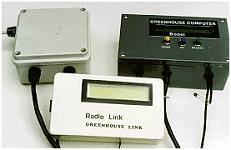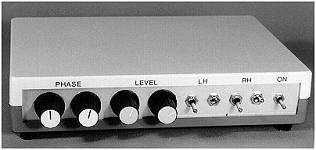
![]() PIC16x84
Toolkit - EPE's original design for PIC16C84 and PIC16F84 microcontrollers.
Stand-alone or interface to the PIC Tutor board, the PIC Toolkit was designed
for speed and versatility. At last, TASM and MPASM compatibility! The
EPE PIC Toolkit is a programmer, program disassembler and bi-lingual translator
all in one - a great idea for PIC users everywhere! Translate between
TASM and MPASM using easy DOS-based options. You need a PC-compatible
computer with QBasic or QuickBASIC installed, and a parallel port. A 12-14V
d.c. power supply is also required, which can be derived from an expansion
socket or separately.
PIC16x84
Toolkit - EPE's original design for PIC16C84 and PIC16F84 microcontrollers.
Stand-alone or interface to the PIC Tutor board, the PIC Toolkit was designed
for speed and versatility. At last, TASM and MPASM compatibility! The
EPE PIC Toolkit is a programmer, program disassembler and bi-lingual translator
all in one - a great idea for PIC users everywhere! Translate between
TASM and MPASM using easy DOS-based options. You need a PC-compatible
computer with QBasic or QuickBASIC installed, and a parallel port. A 12-14V
d.c. power supply is also required, which can be derived from an expansion
socket or separately.
![]() The original
PIC Toolkit is now obsolete and you should use the TK3 (Toolkit Mk3) -
October 2001 issue.
The original
PIC Toolkit is now obsolete and you should use the TK3 (Toolkit Mk3) -
October 2001 issue.

![]() Greenhouse
Computer (Part 1)
Greenhouse
Computer (Part 1)
- microcontroller design uses Atmel's AT89C2051. Monitors and controls
heating and watering for your glasshouse. Part 2 includes a radio link,
which uses DTI-approved 418MHz radio modules.
![]() In the January
1999 issue (P. 34), we said that under certain circumstances a small d.c.
voltage can occur across the probes which may affect the readings. To
avoid the problem, amend the Controller p.c.b. as follows: change C14
to 10nF, C13 to 470nF (0µ47), add a 100k resistor in parallel with
the probes across TB3. Add a 470nF (0µ47) capacitor in series with
TB3 pin 2 and its probe. The software (diskette/ FTP site) has been updated
to reduce the default watering time.
In the January
1999 issue (P. 34), we said that under certain circumstances a small d.c.
voltage can occur across the probes which may affect the readings. To
avoid the problem, amend the Controller p.c.b. as follows: change C14
to 10nF, C13 to 470nF (0µ47), add a 100k resistor in parallel with
the probes across TB3. Add a 470nF (0µ47) capacitor in series with
TB3 pin 2 and its probe. The software (diskette/ FTP site) has been updated
to reduce the default watering time.
Using the L200CV voltage regulator - Andy Flind outlines basic principles of this versatile device.

Robert Penfold's novel anti-phasing design will, with a reasonably high quality set of headphones and microphones, provide a reasonable degree of attenuation over the low-mid audio spectrum. Stripboard design.

![]() Low Battery
Indicator
Low Battery
Indicator
- high performance, micropower circuit won't load your projects unduly.
Compact design fits most d.c. projects. Easy stripboard project